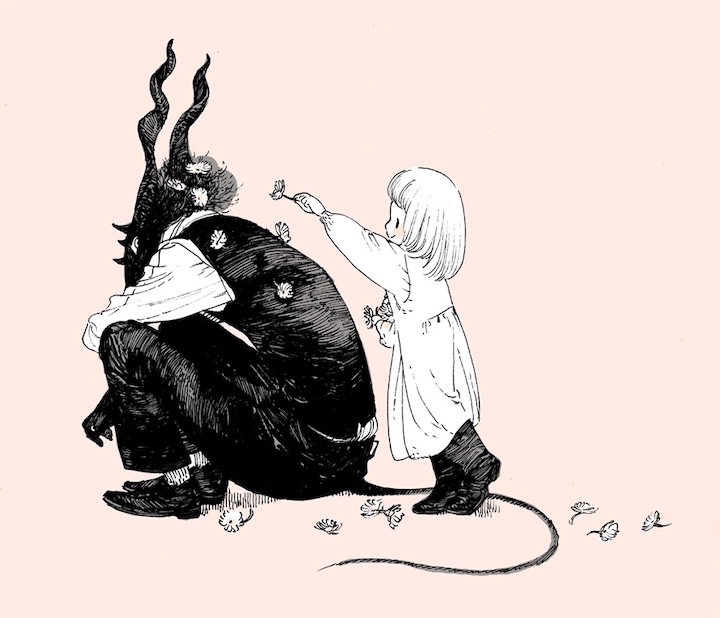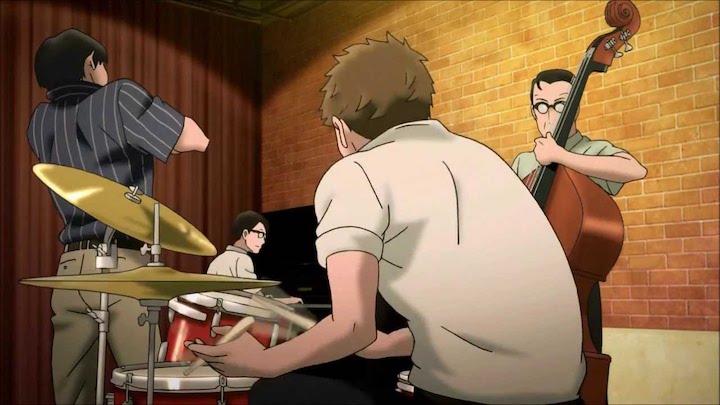Tea parties, cake, and a curse

There's a girl living in the woods with her dapper teacher. They spend their days studying, cleaning the house, and looking for food on the houses in the nearby abandoned villages. Her name is Shiva. She bides her days waiting for her auntie to come back for her. Shiva lives with her teacher, who is a dapper dresser but not a very good cook – he sometimes gets distracted and puts his hands right into the fire. Luckily for him, he's a cursed, horned creature made out of soot and shadows, who feels no pain. He tells her stories before she goes to bed.
That's The Girl from the Other Side.
For a good third of the first volume, that's their entire world – just Shiva, her teacher, and their routine. There isn't anyone in the villages or the woods, no nearby cities. How come this little girl came to live with a towering, tailed humanoid creature with a bird-deer head? Why does he seem afraid of touching her? Is her auntie real or just another story he tells her?
Most other details are just as fuzzy. The teacher's clothes make it look late 18th century, but other elements would make you think it's a couple of centuries earlier. It's got a vaporous, dream-like narrative that makes it feel all the more like a folk tale that managed to survive passed down by oral tradition.
How long has passed in the story, four volumes in? It feels like every book covers only a couple of days, like these six hundred or so pages have been just an eventful week in Shiva's life.
I'm not sure where the story is going, though, nor am I sure that writer Nagabe knows either.
It doesn't matter. The Girl from the Other Side's cinematic charcoal drawings of delicate shadows and a polite, tender monster caring for a moppet draw you in, at their own languid pace.
It could stop at any moment, abruptly, like dreams do. Meanwhile, you enjoy the time you spend in its haze, even if it recedes when you wake up.
It's the rare manga where the feeling it leaves behind is as important as the plot. As hard as it is to recommend a story that hasn't wrapped (that might not properly close), it's a tale that might be best enjoyed as you would a bottle of absinthe. You don't open it and gulp it down in one sitting. You pour a bit from it, ever so rarely, enjoy the associations that it makes, the things it makes you think of, and then you put it back for a couple of months, until the next time comes.

